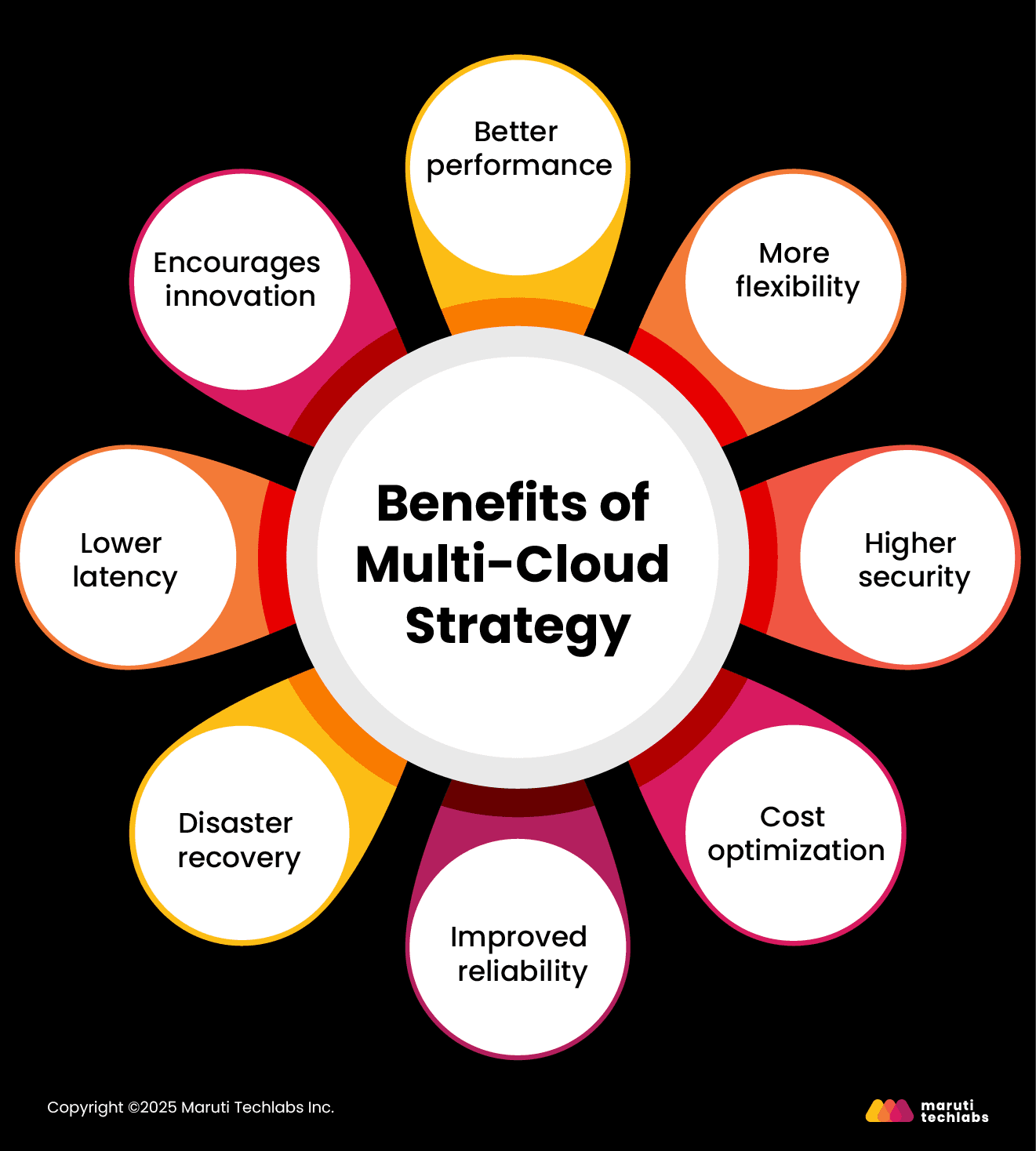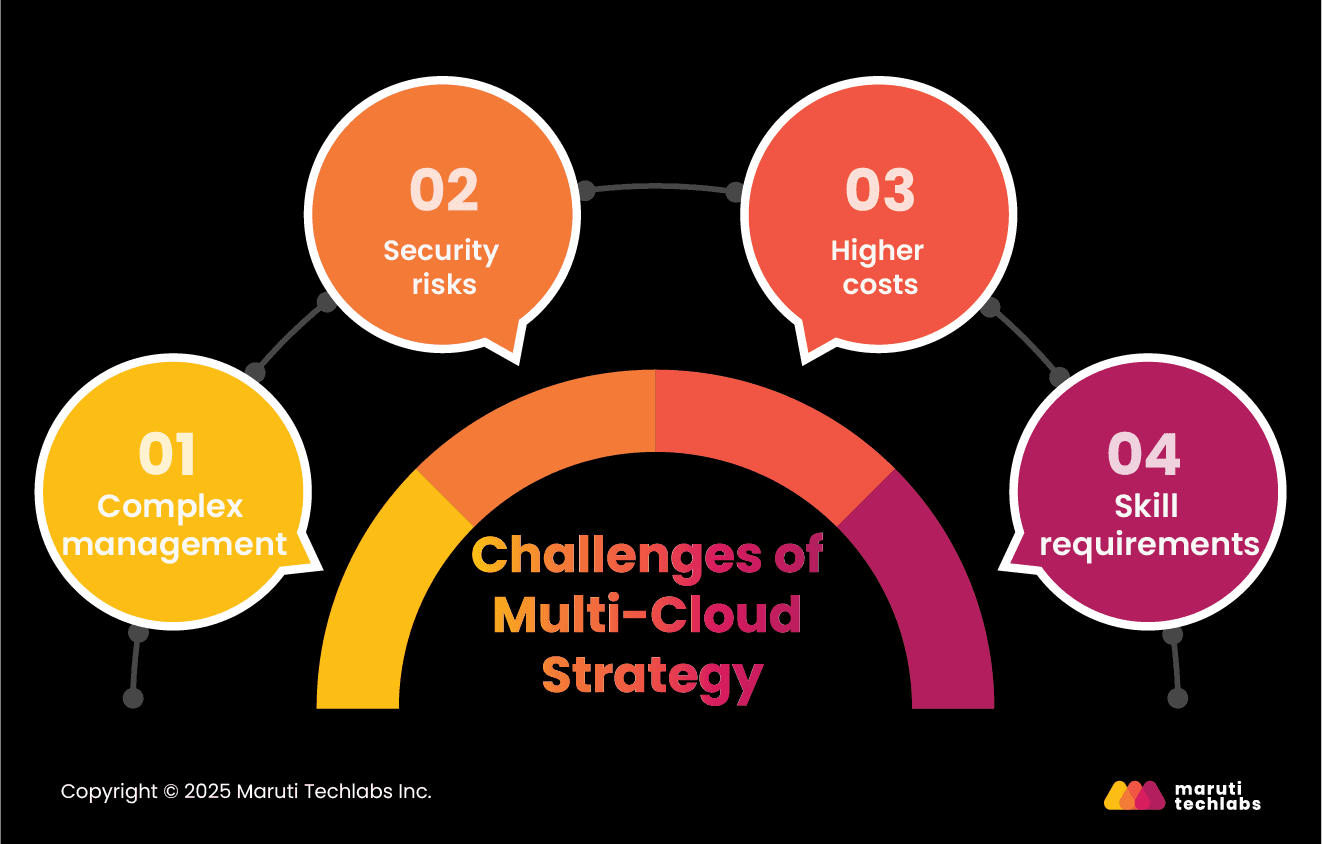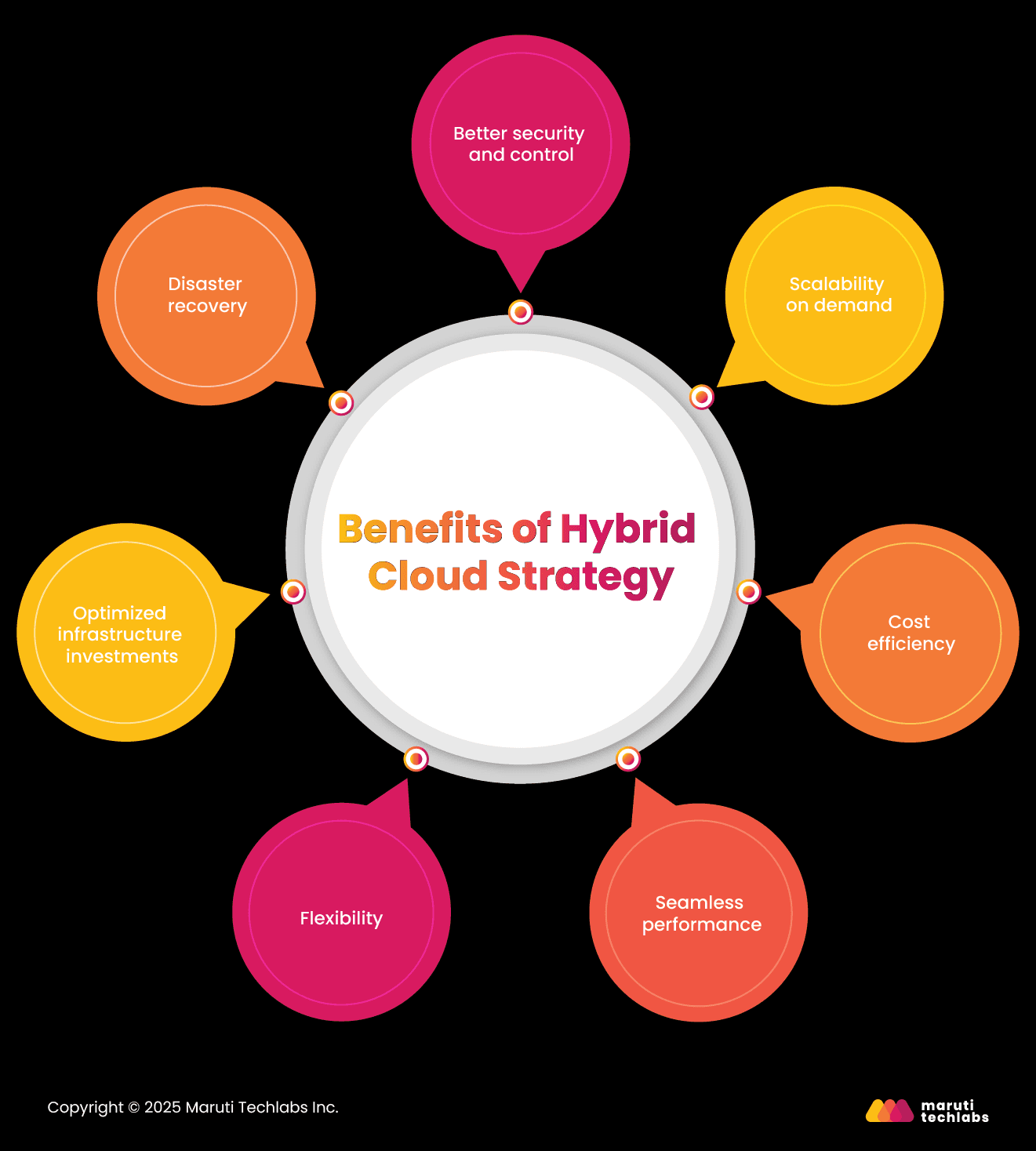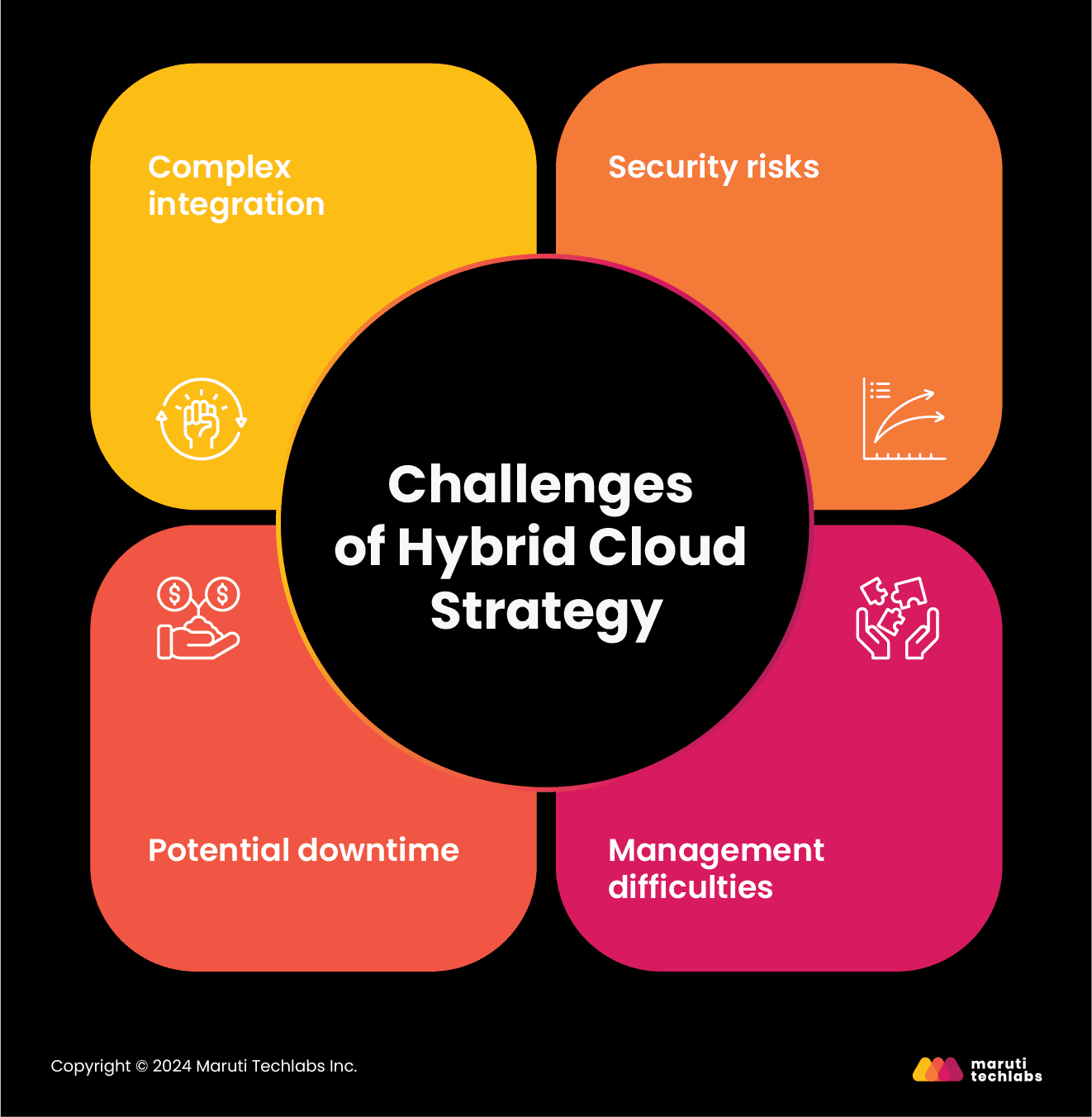

Hybrid Cloud or Multi-Cloud? How Top Companies Make the Right Choice






Choosing between multi-cloud and hybrid cloud can be challenging. Both offer unique advantages, but understanding their differences is key to selecting the right approach for your business. Multi-cloud involves using services from multiple cloud providers, offering flexibility and reducing dependency on a single vendor. In contrast, a hybrid cloud combines private and public cloud resources, providing better control while allowing scalability. Multi-cloud enhances flexibility and minimizes risks, while hybrid cloud ensures security and efficient resource management. However, both also have challenges.
Many businesses leverage these strategies based on their needs. For example, Spotify adopts a multi-cloud approach to improve performance and manage costs, while Netflix relies on a hybrid cloud to streamline content delivery and production.
This blog covers the benefits and challenges of multi-cloud and hybrid-cloud strategies, their key differences, and their use cases.
Cloud technology has transformed how businesses operate, and many companies are now moving beyond a single-cloud approach. A multi-cloud strategy is when an organization uses cloud services from multiple providers instead of relying on just one. These clouds can be all public, all private, or a mix of both.
This approach allows businesses to distribute their computing resources across different platforms, reducing the risk of downtime and increasing security. It also provides greater storage capacity and computing power, which enables businesses to scale operations efficiently.
For example, imagine your business operates in one country, and your application runs smoothly on a single cloud platform. However, as you expand to serve customers in different regions, you might experience performance issues due to distant data centers. A multi-cloud approach allows you to use cloud providers with data centers closer to your new customer base, ensuring fast, reliable service everywhere.
Now, let’s explore the benefits and challenges of a multi-cloud strategy.
A well-planned multi-cloud strategy enhances IT systems, improves efficiency, and ensures businesses can meet growing demands. Here are some key advantages:

While multi-cloud offers many advantages, it also comes with some challenges that businesses should consider:

When done right, a multi-cloud strategy works well. By understanding the benefits and challenges, businesses can make the best choice for their needs.
Businesses want both security and flexibility in their cloud setup, and a hybrid cloud gives them precisely that. It blends private and public cloud services, keeping sensitive data safe while using the public cloud to scale and save money when needed.
For example, a company might keep sensitive customer data in a private cloud for safety while using a public cloud to manage busy times. This keeps things running smoothly without overwhelming their private servers.
Now, let’s explore the benefits and challenges of a hybrid cloud strategy.
A hybrid cloud model helps businesses get the most out of their existing infrastructure while accessing on-demand resources. Here’s how:

While the hybrid cloud offers many advantages, it also comes with a few challenges that businesses need to manage:

A good hybrid cloud setup gives businesses both security and room to grow while reducing risks. With the right planning, companies can switch easily and set themselves up for long-term success.
Both multi-cloud and hybrid cloud involve using more than one cloud, but the way they are set up is different. The key difference lies in how they combine and deploy cloud services.
A multi-cloud setup uses multiple clouds of the same type—either all public or all private—but from different providers. This approach gives businesses more flexibility, reduces dependency on a single vendor, and allows them to pick the best services from various cloud providers.
On the other hand, a hybrid cloud setup combines different types of cloud deployments, such as a private cloud with a public cloud. With this setup, businesses can keep sensitive data safe in a private cloud while using a public cloud to scale and save money. Unlike multi-cloud, a hybrid cloud can be managed by one provider or multiple vendors, depending on what works best for the business.
Both models offer unique advantages, and choosing the right one depends on your business goals and IT needs.
Understanding these cloud models is one thing, but seeing them in action makes the differences clearer. Let’s look at two real-world examples—Spotify using multi-cloud and Netflix using hybrid cloud—to understand when each model works best.
Spotify, one of the world’s leading music streaming services, adopted a multi-cloud strategy to improve performance, reduce costs, and keep its service running smoothly. Instead of relying on just one cloud provider, it spreads its cloud services across multiple public cloud vendors. This allowed Spotify to optimize costs, improve features, and ensure a seamless experience for users worldwide.
By using different cloud providers in different regions, Spotify could cut costs by 60% while maintaining high-quality streaming. This setup also helped prevent outages and performance issues, making sure users could listen to music without interruptions. The multi-cloud approach gave Spotify the flexibility to scale its services, adjust to changing demands, and avoid being locked into a single provider’s limitations.
This example shows how multi-cloud can be a great choice for businesses that need global reach, cost efficiency, and strong performance.
Netflix, a top video streaming platform, chose a hybrid cloud model to balance scalability and control. It uses AWS to stream content while keeping its own infrastructure for content creation and processing. This setup helps Netflix scale easily, manage its content securely, and provide a smooth and reliable experience for users.
The hybrid approach also lets Netflix store and manage data centrally while adapting storage based on demand.
Both models have their strengths—multi-cloud offers flexibility and cost savings, while hybrid cloud provides control and scalability. The right choice depends on a company’s specific needs and goals.
The choice between multi-cloud and hybrid cloud depends on what matters most to your business. If you want more flexibility, better performance, and no vendor lock-in, multi-cloud is a good fit. If security, scalability, and a mix of private and public clouds are your priority, a hybrid cloud is the better option. Both have their ups and downs, but the right approach can help your business grow and work smoothly.
The right cloud strategy isn’t just about technology—it’s about aligning with business goals and ensuring long-term growth. At Maruti Techlabs, we provide expert guidance in designing a cloud strategy that fits your needs. Explore our cloud consulting services that can help you navigate the complexities and make the most of your cloud investments, along with our dedicated cloud security services to ensure your infrastructure remains protected.
Multi-cloud and cross-cloud both involve using multiple cloud providers, but they aren’t the same. Multi-cloud means a business uses different cloud services from various providers. Cross-cloud, on the other hand, allows applications or workloads to move data smoothly between clouds.
While multi-cloud is about using different clouds for different needs, cross-cloud focuses on seamless data sharing between them.
Multi-cloud solutions offer more flexibility than hybrid cloud setups. They make it easier for businesses to adapt and scale as their needs change.
A hybrid cloud setup can include a multi-cloud as part of its deployment. The main difference is that both use public clouds, but only hybrid cloud setups also have a private cloud. So, if a hybrid cloud setup includes multiple public cloud providers, it can also be considered multi-cloud. However, a multi-cloud setup isn’t necessarily hybrid since it doesn’t require a private cloud.
Hybrid cloud systems let companies use private clouds for sensitive data or high-speed processing while leveraging public clouds for flexibility and cost savings. Multi-cloud systems, on the other hand, provide access to a wide range of resources with easy deployment and management.
A private cloud is a cloud service that a company owns, manages, and maintains for its own use. In contrast, a public cloud is managed by a third-party provider. Hybrid cloud systems bring both together, combining private and public cloud services for greater flexibility.


